
Over half (29) of the states had a median age[1] older than the median age in the USA (38.4 years), including six states in the Midwest. Data from the U.S. Census Bureau show that the population of 65 and older has grown by over a third (34.2%) since 2010, driven by the aging of Baby Boomers born between 1946 and 1964. The growth of this population group contributed to an increase of the national median age from 37.2 years in 2010 to 38.4 in 2019.[2] Despite the fact that the nation has continued to gray, many Midwestern counties experience a reversal in aging trends (Figure 1). Moreover, North Dakota was the only state whose median age declined (by 1.7 years) between 2010 and 2019. In 2019, North Dakota’s median age was 35.3 years.[3]
Figure 1. Percent change among the 65 and older population by county: 2010 to 2019
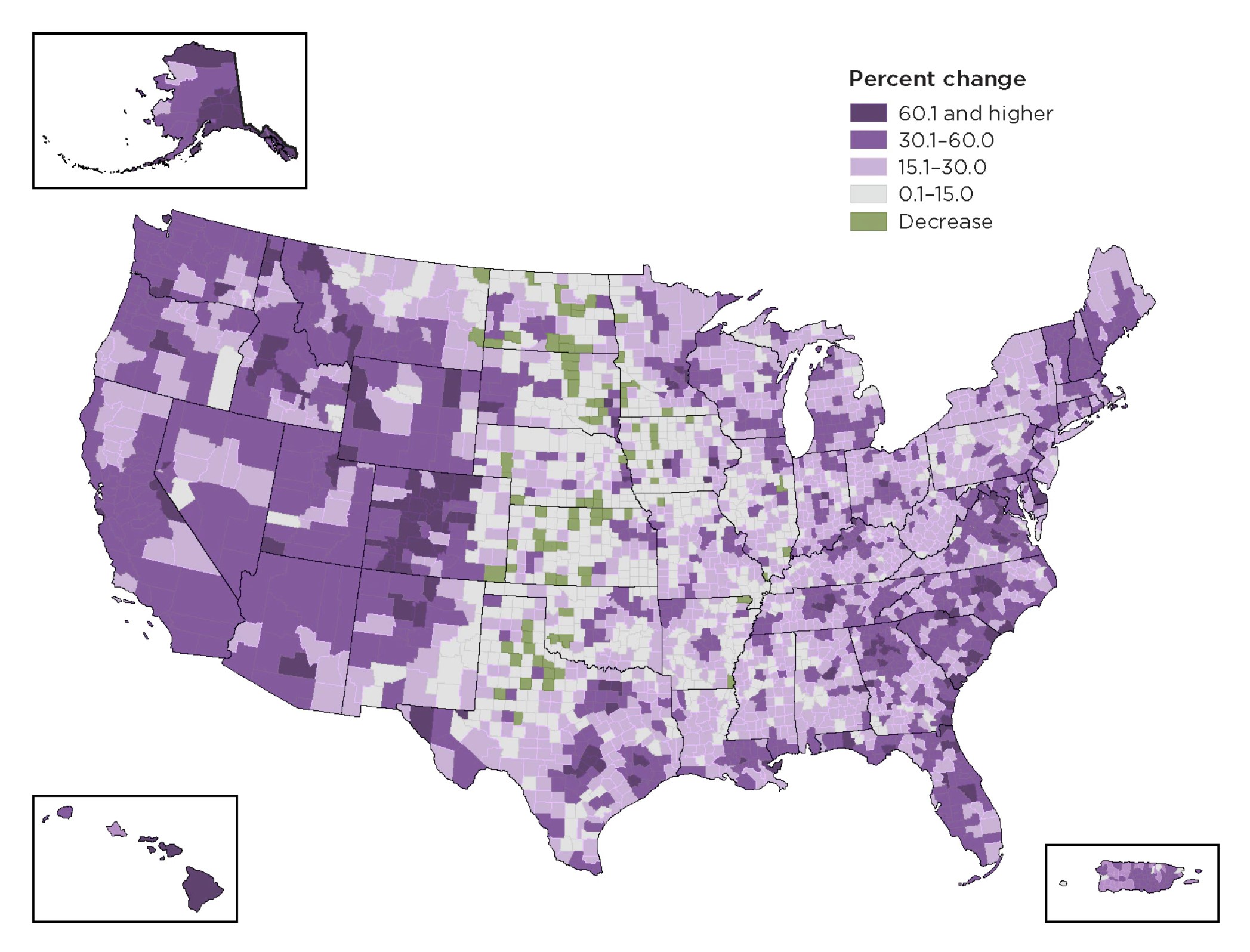 Source: U.S. Census Bureau
Source: U.S. Census Bureau
Based on U.S. Census data, almost 17 percent of counties in the U.S. showed a decrease in median age between April 2010 and July 2017. The majority of these counties were in Midwest, representing 51.4 percent of the nation’s 531 counties that were getting younger. Some of the most significant decreases in the counties with 10,000 people and more were in North Dakota, South Dakota, and Nebraska. For example, Williams County in North Dakota had the largest decline in median age, decreasing by 7.1 years.[4] In 2018 and 2019, Williams County was also the fastest-growing county with a population of 20,000 or more in the last ten years. The rapid growth between 2010 and 2019 was mainly due to net domestic migration, natural increase, and net international migration.[5]
Nevertheless, this pattern of counties getting younger does not refer only to Midwest. Many of the 531 counties are located in a band that runs through Great Plains from Montana to Texas (Figure 2).[6]
Figure 2. Median age change by county: 2010 to 2017
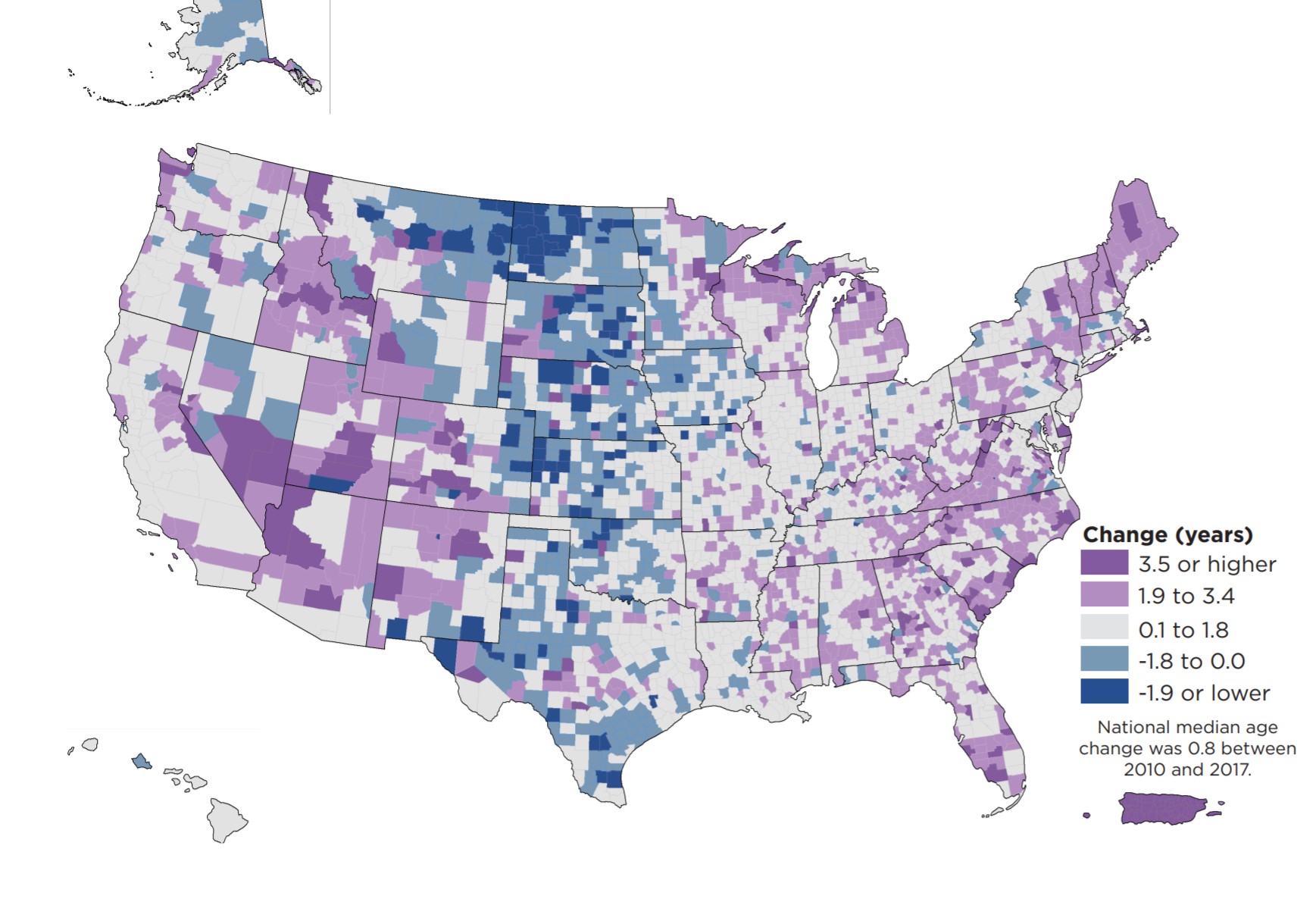
Source: U.S. Census Bureau
A closer look at the North-Central Region shows that seven out of twelve Midwestern states belonged to the top-fifteen states with the negative or very low positive increase in median age between 2010 and 2019. These states were North Dakota (-1.7 years), Iowa (0.4 years), South Dakota (0.5), Ohio (0.7), and Minnesota, along with Indiana, both indicating 0.9 years of median age increase (Figure 3).
Figure 3. Numeric change in median age in North-Central Region: 2010 to 2019
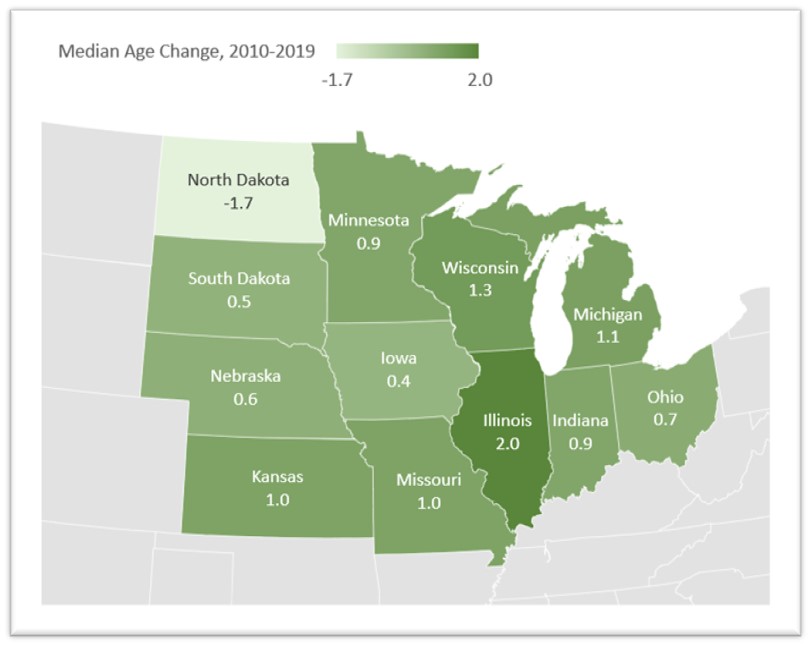
Source: StatsAmerica.org
What are the factors driving the changes in the median age nationally and in Midwest?
There has been significant growth in the number of 65-and-older population since 2011. This group is the fasted group category that has grown by over a third since 2010. Moreover, the under 18 years old population has been getting smaller since 2010, partially due to a lower fertility rate in the U.S.[7]
Still, while the nation is projected to continue aging, almost one in five counties have been getting younger. A median age decrease has been seen particularly in the North-Central Region during the 2000s. The U.S. Census Bureau defined several essential drivers of change in counties with median age decrease between 2010 and 2017.
Hispanic population change
The Hispanic population increased by 21.6 percent in the ‘getting younger’ counties between 2010 and 2017. On the contrary, the non-Hispanic population grew only 1.4 percent in the same counties over the same period of time (Figure 4).[8] In 2019, the median age of the Hispanic population in the nation was nearly nine years younger (29.8) compared to the whole country (38.4).[9]
Figure 4. Hispanic origin and race distribution by age groups: 2010 to 2017
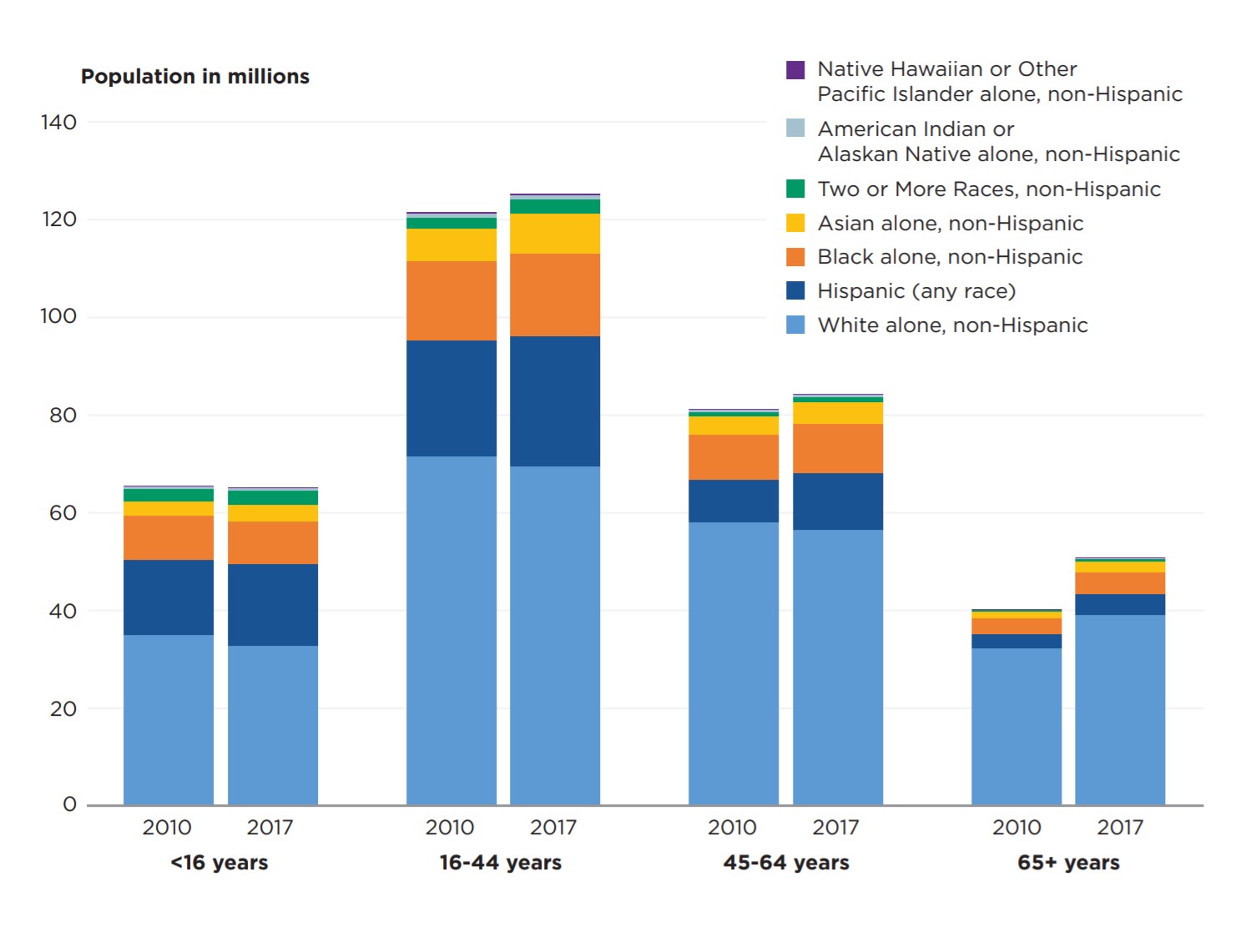
Source: U.S. Census Bureau
Domestic and international migration
Particularly in North Dakota, the oil boom in the early 2010s attracted thousands of workers to the western part of the state. A large influx of domestic migrants led to the growth of both the Hispanic and non-Hispanic populations.
The median age of any county can be reduced by the presence of universities and large colleges. There are about 19.9 million college and university students in the United States, and most are under 25 years old. Several of the younger counties are home to these post-secondary institutions. Almost one-fourth of the county’s residents are enrolled in graduate school or college in some of these counties. Other reasons leading to the relocation of young people include a move for work, family, friends, and preference of place they want to live.[10]
International migration as a population change driver dominates in more eastern areas, particularly in Texas, Colorado, Nebraska, and Montana (Figure 5).
Figure 5. The largest drivers of population change in counties with median age decrease: 2010 to 2017
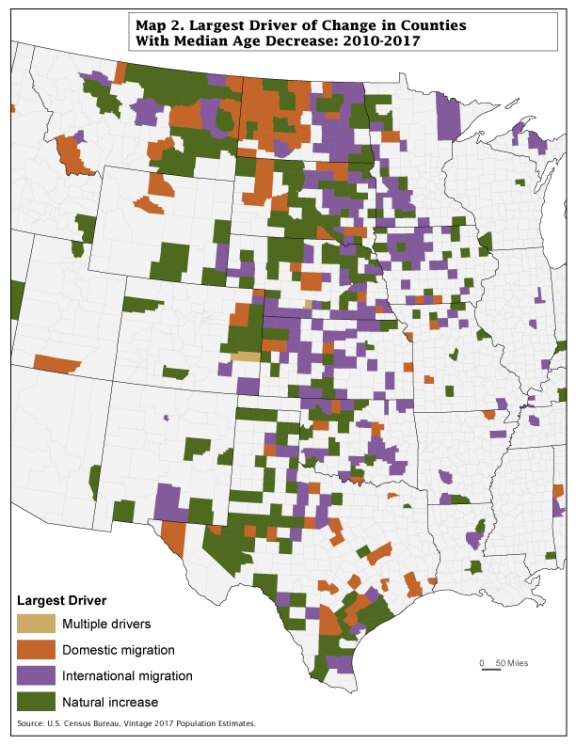
Source U.S. Census Bureau
Natural increase
A natural increase can also cause population change. Some ‘younger’ counties in western parts of the Great Plains, particularly North Dakota, South Dakota, and Nebraska, have been experiencing a growing number of new families. In these states, the youngest counties have more than ten percent of residents under age 5 (Figure 5).[11]
[1] The median age of population is the age that divides population into two numerically equal groups. Half the people are below this age and half are above it.
[2] U.S. Census Bureau: https://www.census.gov/newsroom/press-releases/2020/65-older-population-grows.html
[3] U.S. Census Bureau: https://www.census.gov/newsroom/press-releases/2020/65-older-population-grows.html
[4]U.S. Census Bureau: https://www.census.gov/newsroom/press-releases/2018/popest-characteristics.html
[5] U.S. Census Bureau: https://www.census.gov/newsroom/press-releases/2020/pop-estimates-county-metro.html
[6] U.S. Census Bureau: https://www.census.gov/library/stories/2018/06/young-counties.html
[7]USA Today: https://www.usatoday.com/story/news/nation/2019/07/15/youngest-county-in-every-state/39668773/
[8] U.S. Census Bureau: https://www.census.gov/library/stories/2018/06/young-counties.html
[9] U.S. Census Bureau: https://www.census.gov/newsroom/press-releases/2020/65-older-population-grows.html
[10] USA Today: https://www.usatoday.com/story/news/nation/2019/07/15/youngest-county-in-every-state/39668773/
[11] USA Today: https://www.usatoday.com/story/news/nation/2019/07/15/youngest-county-in-every-state/39668773/
Author: Zuzana Bednarikova, zbednari@purdue.edu
Dr. Zuzana Bednarikova is a Research and Extension Specialist at NCRCRD.
